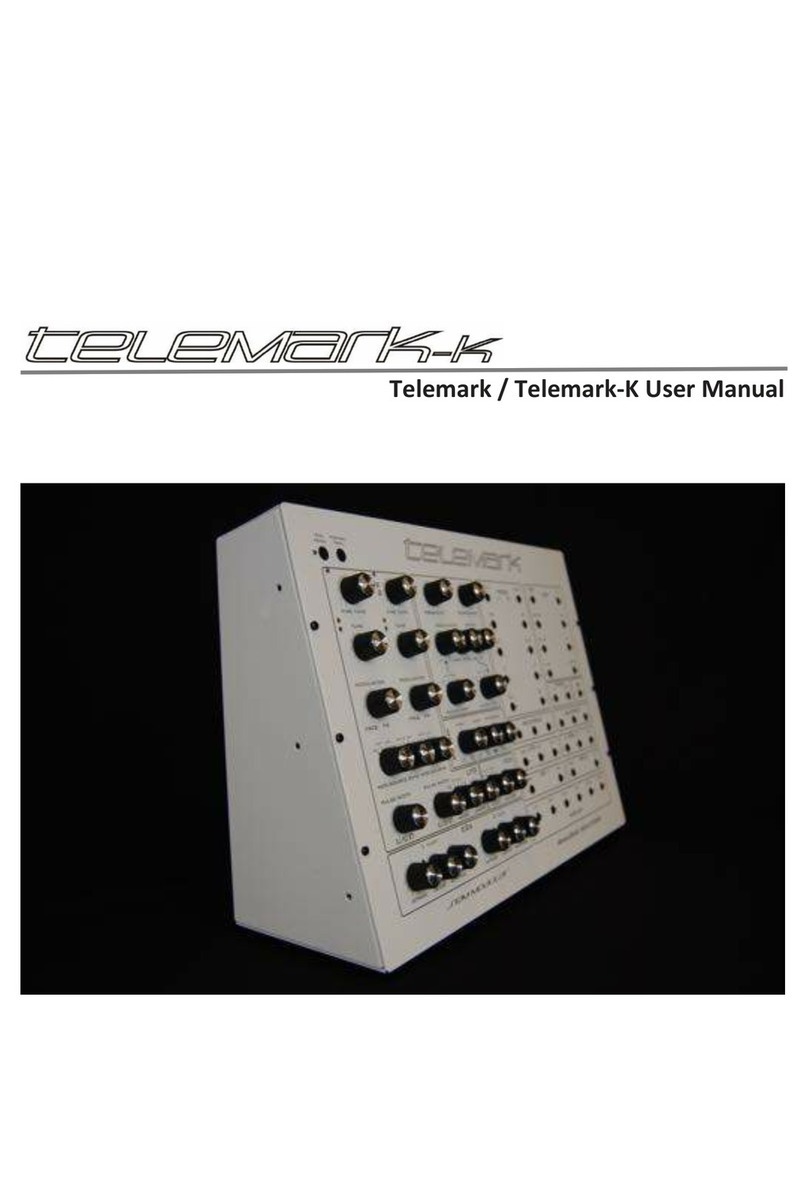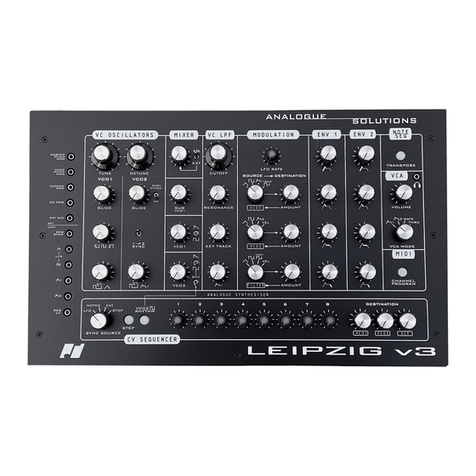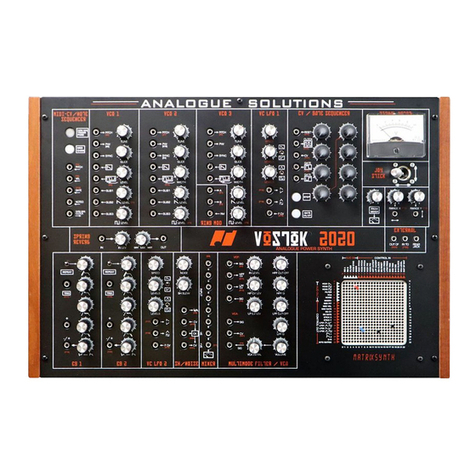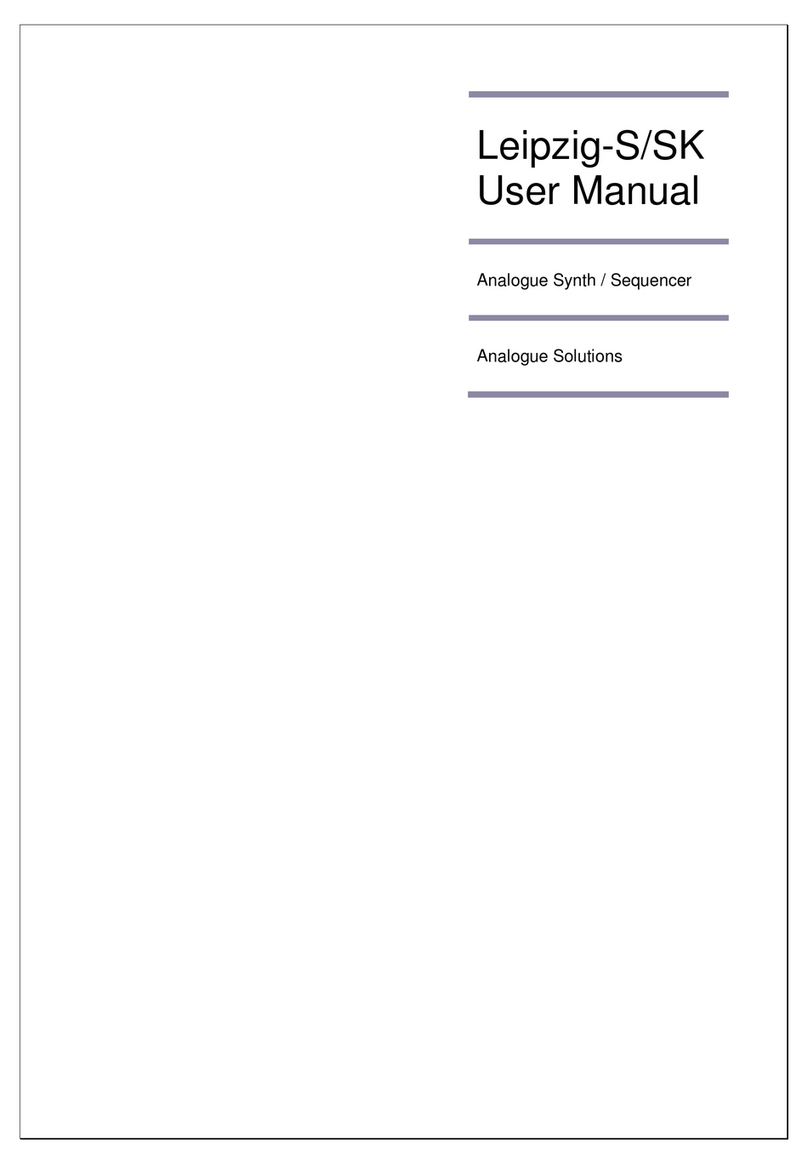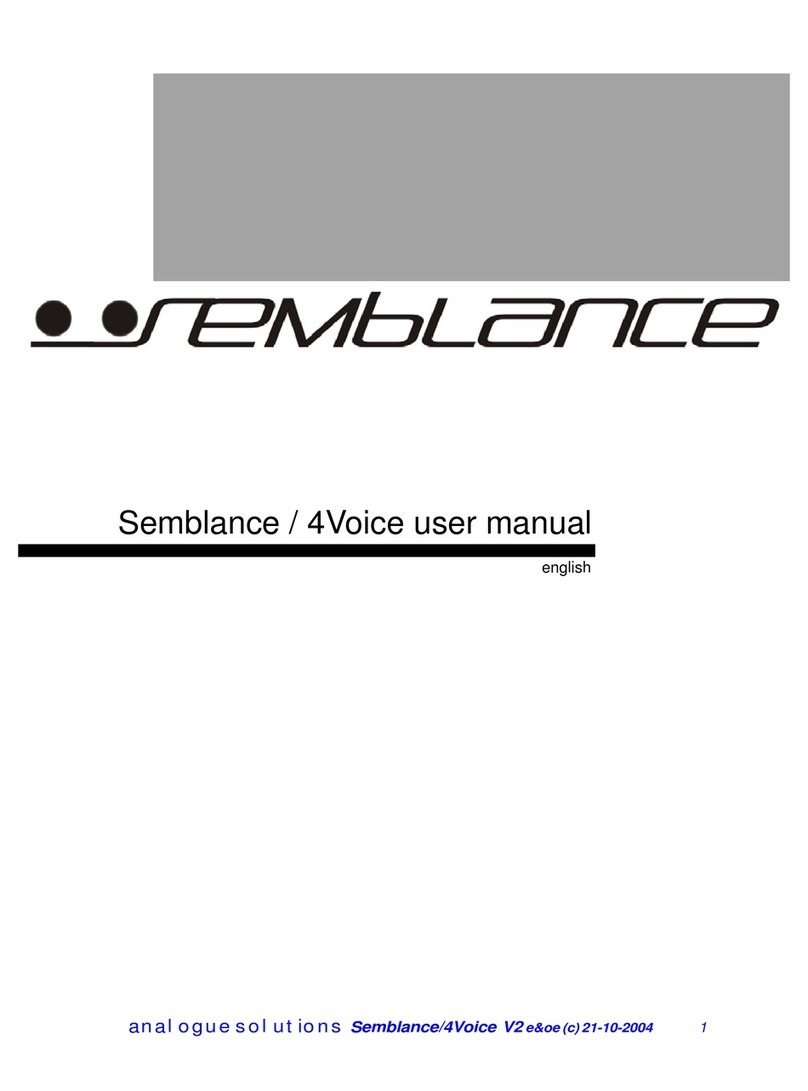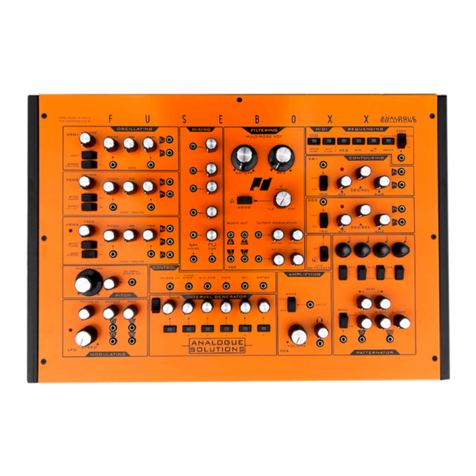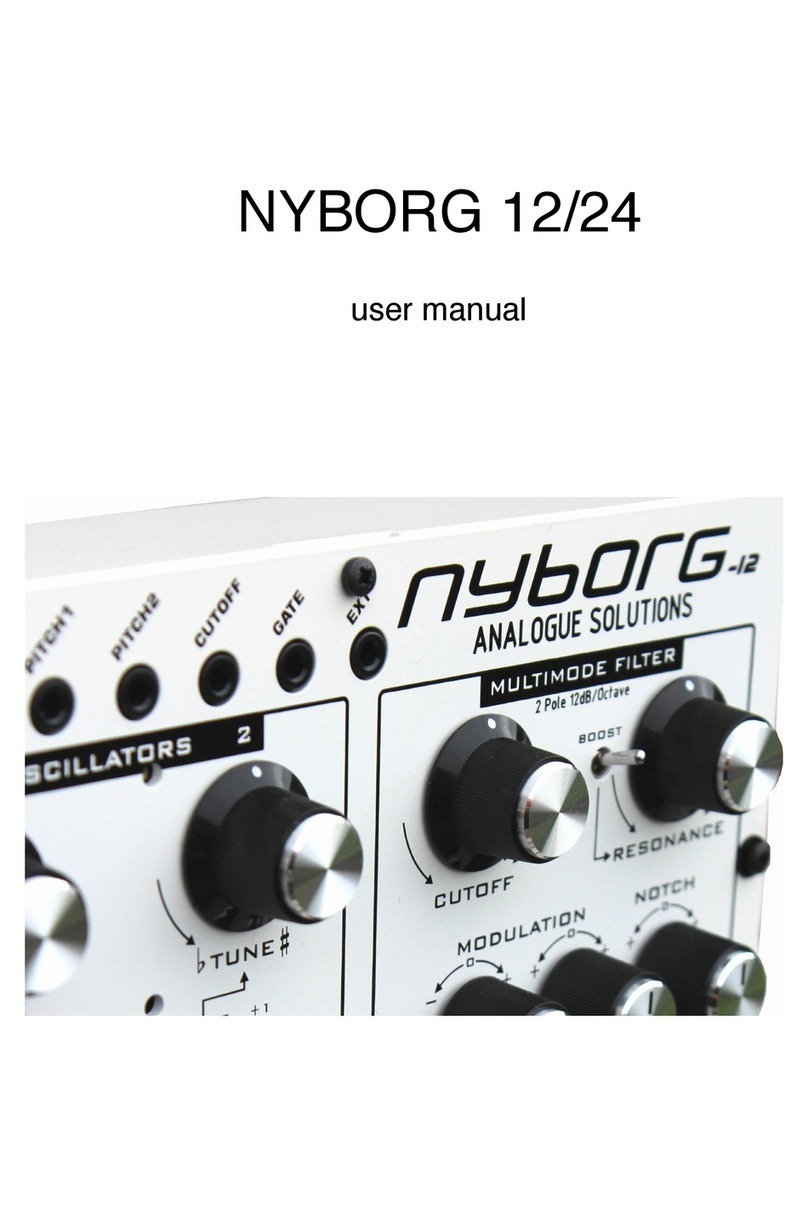analogue solutions Semblance/Telemark e&oe (c) 5-3-09
2
Contents
SPECIFICATION...........................................................................4
INTRODUCTION...........................................................................6
APPLICATIONS............................................................................6
SAFETY INSTRUCTIONS ............................................................7
INITIAL TUNING...........................................................................8
CIRCUITS IN DETAILS.................................................................8
VCO1.............................................................................................9
VCO2...........................................................................................10
SYNC...........................................................................................11
NOISE GENERATOR .................................................................12
MIXER.........................................................................................12
VCF .............................................................................................13
Filtering External Sound Sources............................................15
ENVELOPE GENERATORS.......................................................16
EG1 ASR.....................................................................................16
EG2 ASR.........................................................................................
VCA.................................................................................................
LFO .................................................................................................
MIDI to CV CONVERTER...............................................................
EG2 ASR.....................................................................................17
VCA.............................................................................................17
LFO / Sample and Hold.............................................................18
REAR PANEL.............................................................................20
REAR PANEL DETAILS.............................................................21
REAR PANEL AUDIO CONNECTIONS.....................................22
NO SIGNAL? ..............................................................................23
QUICK METHOD FOR ZERO MODULATION ...........................23
EXPANSION ...............................................................................23
INTERNAL CALIBRATION OF VCOs........................................23
MIDI CONNECTIONS .................................................................25
LED Description.........................................................................25
Program Mode ...........................................................................25
To Set MIDI Receive Channel...................................................26
Telemark.....................................................................................27
